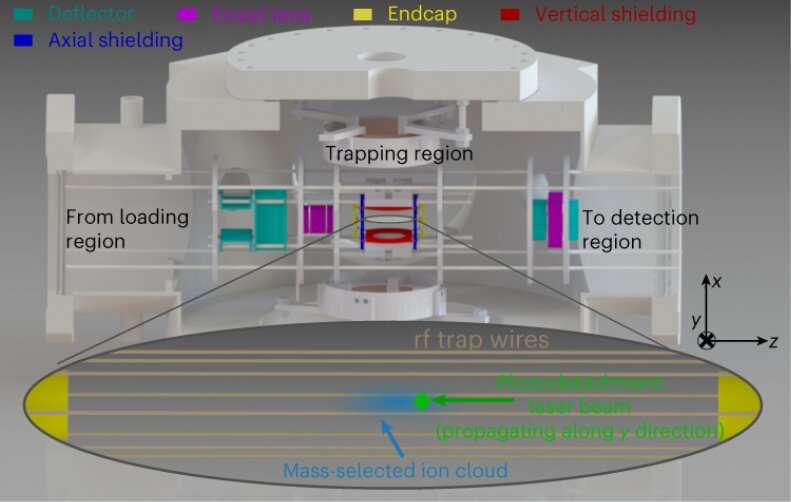June 29, 2023 report
This article has been reviewed according to Science X's editorial process and policies. Editors have highlighted the following attributes while ensuring the content's credibility:
fact-checked
peer-reviewed publication
trusted source
proofread
Using laser-based evaporative cooling to chill negatively charged molecules

A team of physicists at the Physikalisches Institut, Ruprecht-Karls-Universität working with colleagues from Institut für Ionenphysik und Angewandte Physik, Universität Innsbruck, has developed a laser technique to selectively remove the most energetic ions from a sample, cooling those that remain.
In their paper published in the journal Nature Physics, the group describes their method and possible uses for it. The team at Nature has also published a Research Highlights paper in the same issue outlining the work by the team on this new effort.
Cooling molecular ions is useful in a wide variety of applications in both physics and chemistry research, including current work to better understand the chemistry of celestial bodies such as Saturn's moon Titan. Unfortunately, cooling negatively charged molecules has proven to be more difficult, and their use has been limited. In this new effort, the research team developed a technique that makes the process relatively easy.
The idea stems from prior work involving the use of evaporative cooling, a technology related to evaporative coolers that are used to cool homes in dry areas. In this instance, the technology was used to negatively charge antiprotons by changing the shape of the trap containing them.
In this new work, the team started by using a radio frequency trap to hold a sample of OH– anions at approximately 370 K. They used a special type of laser known as a single photo-detachment laser to manipulate the anions in the trap. This was done by tuning the laser to a desired threshold, which neutralized ions crossing the laser beam, allowing them to be removed from the trap.
As this process continued, those anions with the highest energies were slowly removed, leaving those with lower energies behind. And that left the entire trap and the remaining sample much cooler. In subsequent trials, the team found that they were able to optimize the process, resulting in cooling the trap by several orders of magnitude.
The team concludes that their technique could be used in lab studies and also with research related to better understanding interstellar clouds or the atmosphere of celestial bodies such as Titan.
More information: Jonas Tauch et al, Laser-induced forced evaporative cooling of molecular anions below 4 K, Nature Physics (2023). DOI: 10.1038/s41567-023-02084-6
Daniel Comparat et al, Anions get cold, Nature Physics (2023). DOI: 10.1038/s41567-023-02085-5
Journal information: Nature Physics , Nature
© 2023 Science X Network





















